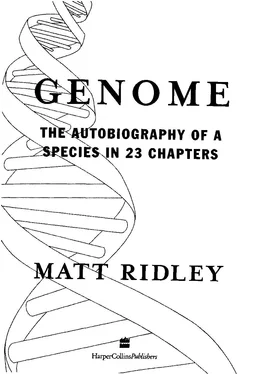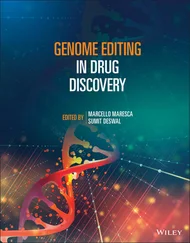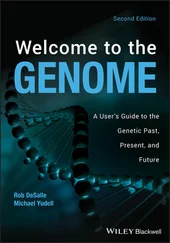Genome - Matt Ridley
Здесь есть возможность читать онлайн «Genome - Matt Ridley» весь текст электронной книги совершенно бесплатно (целиком полную версию без сокращений). В некоторых случаях можно слушать аудио, скачать через торрент в формате fb2 и присутствует краткое содержание. Жанр: Старинная литература, на английском языке. Описание произведения, (предисловие) а так же отзывы посетителей доступны на портале библиотеки ЛибКат.
- Название:Matt Ridley
- Автор:
- Жанр:
- Год:неизвестен
- ISBN:нет данных
- Рейтинг книги:5 / 5. Голосов: 1
-
Избранное:Добавить в избранное
- Отзывы:
-
Ваша оценка:
- 100
- 1
- 2
- 3
- 4
- 5
Matt Ridley: краткое содержание, описание и аннотация
Предлагаем к чтению аннотацию, описание, краткое содержание или предисловие (зависит от того, что написал сам автор книги «Matt Ridley»). Если вы не нашли необходимую информацию о книге — напишите в комментариях, мы постараемся отыскать её.
Matt Ridley — читать онлайн бесплатно полную книгу (весь текст) целиком
Ниже представлен текст книги, разбитый по страницам. Система сохранения места последней прочитанной страницы, позволяет с удобством читать онлайн бесплатно книгу «Matt Ridley», без необходимости каждый раз заново искать на чём Вы остановились. Поставьте закладку, и сможете в любой момент перейти на страницу, на которой закончили чтение.
Интервал:
Закладка:
It is not often that you find language like this in one of the most sober and serious of all scientific publications, the Philosophical Transactions of the Royal Society: 'The mammalian Y chromosome is thus likely to be engaged in a battle in which it is outgunned by its opponent. A logical consequence is that the Y should run away and hide, shedding any transcribed sequences that are not essential to its function.'1 'A battle', 'outgunned', 'opponent', 'run away'? These C O N F L I C T 1 0 9
are hardly the sort of things we can expect molecules of D N A to do. Yet the same language, a little more technically phrased, appears in another scientific paper about the Y chromosome, entitled 'The enemies within: intergenomic conflict, interlocus contest evolution ( I C E ) , and the intraspecific Red Queen'.2 The paper reads, in part:
'Perpetual I C E between the Y and the rest of the genome can thereby continually erode the genetic quality of the Y via genetic hitchhiking of mildly deleterious mutations. The decay of the Y is due to genetic hitchhiking, but it is the I C E process that acts in a catalytic way to continually drive the male versus female anatagonistic coevolution.' Even if most of this is Greek to you, there are certain words that catch the eye: words like 'enemies' and 'antagonism'.
Then there is a recent textbook on the same material. Its title, quite simply, is "Evolution: the four billion year war'.3 What is going on?
At some point in our past, our ancestors switched from the common reptilian habit of determining sex by the temperature of the egg to determining it genetically. The probable reason for the switch was so that each sex could start training for its special role at conception. In our case, the sex-determining gene made us male and the lack of it left us female, whereas in birds it happened the other way round. The gene soon attracted to its side other genes that benefited males: genes for big muscles, say, or aggressive tendencies.
But because these were not wanted in females — wasting energy they would prefer to spend on offspring - these secondary genes found themselves at an advantage in one sex and at a disadvantage in the other. They are known in the trade as sexually antagonistic genes.
The dilemma was solved when another mutant gene suppressed the normal process of swapping of genetic material between the two paired chromosomes. Now the sexually antagonistic genes could diverge and go their different ways. The version on the Y chromosome could use calcium to make antlers; the version on the X
chromosome could use calcium to make milk. Thus, a pair of middle-si2ed chromosomes, once home to all sorts of 'normal' genes, was hijacked by the process of sex determination and became the sex chromosomes, each attracting different sets of genes. On the Y
1 1 0 G E N O M E
chromosome, genes accumulate that benefit males but are often bad for females; on the X accumulate genes that are good for females and deleterious in males. For instance, there is a newly discovered gene called DAX, found on the X chromosome. A few rare people are born with one X and one Y chromosome, but with two copies of the DAX gene on the X chromosome. The result is, that although such people are genetically male, they develop into normal females.
The reason, it transpires, is that DAX and SKY — the gene on the Y chromosome that makes men into men — are antagonistic to each other. One SRY defeats one DAX, but two DAXes defeat one SRY.4
This outbreak of antagonism between genes is a dangerous situ-ation. Lurching into metaphor, one might begin to discern that the two chromosomes no longer have each other's interests at heart, let alone those of the species as a whole. Or, to put it more correctly, something can be good for the spread of a gene on the X chromosome that actually damages the Y chromosome or vice versa.
Suppose, for instance, that a gene appeared on the X chromosome that specified the recipe for a lethal poison that killed only sperm carrying Y chromosomes. A man with such a gene would have no fewer children than another man. But he would have all daughters and no sons. All of those daughters would carry the new gene, whereas if he had had sons as well, none of them would have carried it. Therefore, the gene is twice as common in the next generation as it would otherwise be. It would spread very rapidly. Such a gene would only cease to spread when it had exterminated so many males that the very survival of the species was in jeopardy and males were at a high premium.5
Far-fetched? Not at all. In the butterfly Acrea encedon, that is exactly what has happened. The sex ratio is ninety-seven per cent female as a result. This is just one of many cases known of this form of evolutionary conflict, known as sex-chromosome drive. Most known instances are confined to insects, but only because scientists have looked more closely at insects. The strange language of conflict used in the remarks I quoted above now begins to make more sense. A C O N F L I C T I I I
piece of simple statistics: because females have two X chromosomes while males have an X and a Y, three-quarters of all sex chromosomes are Xs; one-quarter are Ys. Or, to put it another way, an X
chromosome spends two-thirds of its time in females, and only one-third in males. Therefore, the X chromosome is three times as likely to evolve the ability to take pot shots at the Y as the Y is to evolve the ability to take pot shots at the X. Any gene on the Y
chromosome is vulnerable to attack by a newly evolved driving X
gene. The result has been that the Y chromosome has shed as many genes as possible and shut down the rest, to 'run away and hide' (in the technical jargon used by William Amos of Cambridge University).
So effectively has the human Y chromosome shut down most of its genes that the great bulk of its length consists of non-coding D N A , serving no purpose at all - but giving few targets for the X
chromosome genes to aim at. There is a small region that seems to have slipped across from the X chromosome fairly recently, the so-called pseudo-autosomal region, and then there is one immensely important gene, the SRY gene mentioned above. This gene begins the whole cascade of events that leads to the masculinisation of the embryo. Rarely can a single gene have acquired such power.
Although it only throws a switch, much else follows from that. The genitals grow to look like a penis and testes, the shape and constitution of the body are altered from female (the default in our species, though not in birds and butterflies), and various hormones go to work on the brain. There was a spoof map of the Y chromosome published in the journal Science a few years ago, which purported to have located genes for such stereotypically male traits as flipping between television channels, the ability to remember and tell jokes, an interest in the sports pages of newspapers, an addiction to death and destruction movies and an inability to express affection over the phone - among others. The joke is funny, though, only because we recognise these habits as male, and therefore far from mocking the idea that such habits are genetically determined, the joke reinforces the idea. The only thing wrong with the diagram is that these male behaviours come not from specific genes for each of 1 1 2 G E N O M E
them, but from the general masculinisation of the brain by hormones such as testosterone which results in a tendency to behave this way in the modern environment. Thus, in a sense, many masculine habits are all the products of the SRY gene itself, which sets in train the series of events that lead to the masculinisation of the brain as well as the body.
Читать дальшеИнтервал:
Закладка:
Похожие книги на «Matt Ridley»
Представляем Вашему вниманию похожие книги на «Matt Ridley» списком для выбора. Мы отобрали схожую по названию и смыслу литературу в надежде предоставить читателям больше вариантов отыскать новые, интересные, ещё непрочитанные произведения.
Обсуждение, отзывы о книге «Matt Ridley» и просто собственные мнения читателей. Оставьте ваши комментарии, напишите, что Вы думаете о произведении, его смысле или главных героях. Укажите что конкретно понравилось, а что нет, и почему Вы так считаете.












